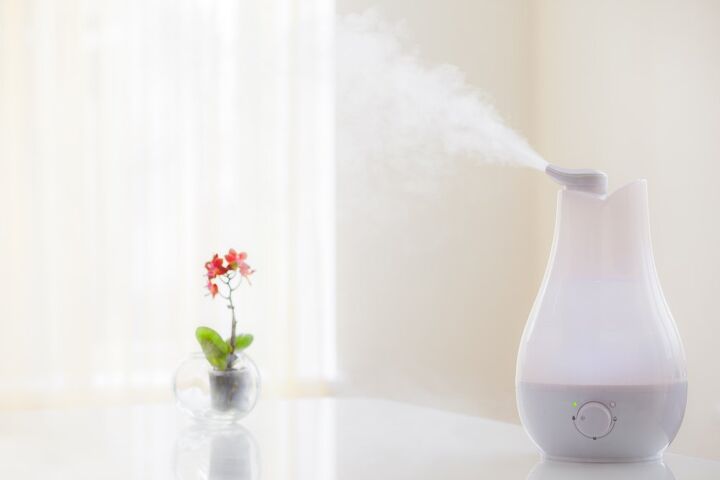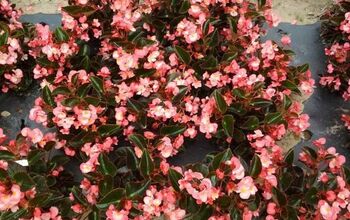How To Clean A Honeywell Humidifier

Not too long ago, I had a moment where my allergies were out of control. Every time I woke up, I’d be sneezing and wheezing up a storm. It only dawned on me after someone mentioned that I haven’t cleaned out my humidifier. It was a Honeywell. After a quick go, I was able to figure out how to clean it and how to make my mold allergies disappear.
Keeping your Honeywell humidifier clean is fairly easy. Like most other humidifiers, the best way to ensure that you have clean equipment is to pour undiluted vinegar in the water tank. The vinegar will kill off mold and mildew quickly while deodorizing your humidifier.
As you can tell from my own personal account, having a dirty humidifier can wreak havoc when it comes to your allergies. Even if you aren’t allergic to mold or mildew, keeping an unclean humidifier means that you could still run the risk of a serious bacterial infection. This guide will give you the run-through when it comes to your humidifier’s sanitation.
How Often Do You Need To Clean Your Humidifier?
Cleanliness, when it comes to a humidifier, can mean several different things. If you’re talking about how often you should change the water in it, the answer is daily. If you’re discussing trying to kill off mold and mildew, once a week is a bare minimum. On the other hand, deep cleaning due to neglect is something that should almost never happen.
Why Do You Have To Change The Water In A Humidifier?
This was a rookie mistake I did when I first got a humidifier. The good news is that I was able to clean it out after I noticed why daily refills are important. Standing water is one of the easiest ways to encourage mold. More alarmingly, it can also turn your humidifier into a mosquito breeding zone if you’re very unlucky.
How To Clean Your Humidifier Properly
Like with many things in your home, vinegar acts as a cleaning panacea. White vinegar, more specifically, has a high enough acidity that it will get rid of mold, mildew, bacteria, and odors without damaging the inner workings of your humidifier. This makes it a power player that is ideal for weekly cleanings.
To clean your humidifier, pour in undiluted vinegar and let it run for an hour outside of your home. Then, rinse with water. That’s all you have to do. The vinegar will not stain fabrics and will also be able to lift out any biological agents that may have been growing inside. Things get more complicated if you’ve added other liquids aside from water to your humidifier.
Getting Rid Of A Vinegar Smell In Your Humidifier
If you’ve just given your humidifier a cleaning, you might get that weirdly sour smell of vinegar in your humidifier. Thankfully, there are a couple of tricks that can help get rid of that smell. Here’s how:
- Drop a couple of drips of essential oil into the water tank when you next run it. Most people will need around six to eight drops of their favorite essential oil to get rid of the smell. Since these “oils” aren’t actually based in fatty oils, they won’t harm the inside of the humidifier.
- Do a full run of water outside. .Sometimes, dilution helps even more than getting some eucalyptus oil in your humidifier. It’s a good idea to see if running it for an hour or so stops the odor.
How To Deep Clean Your Humidifier
Let’s say that you recently added some perfume to your humidifier or perfume oils. You need to make sure that the extra residues aren’t going to be stuck in the humidifier. However, you won’t be able to get to all the portions of the motor and steamer by hand. Here’s how you can get a better clean:
- Take apart your humidifier as best you can. Some Honeywell models won’t have any removable parts, while others will. Use your owner’s manual to help you figure out how much you can do without harming your humidifier.
- Let the filter dry out while you wash the humidifier. You should take time to throw out the filter (or at least clean it) if you notice signs of mold growth. If it looks alright, then you will need to take a microfiber towel and carefully dab at it.
- Use vinegar or dish soap to clean the tank and base of the humidifier. Both can be used with most Honeywell items. Vinegar works better for mold and mildew, while dish soap is better for cutting grease. Use a sponge to wipe items down, then rinse with cold water.
- After you scrub everything down with soapy water, rinse it out. No need to let it dry. Just reassemble your humidifier per the instruction booklet you have.
- Run the humidifier with a cup of vinegar per gallon of water. Do this for an hour and bring your humidifier outside. Then, swirl the remaining vinegar around and dump it out. This should have gotten rid of any oil or gunk that was in your humidifier’s plumbing. Do not add the filter to your humidifier at this point, as vinegar could damage the filter.
- Add fresh water, and run the humidifier for an hour. The water acts as a final rinse for the interior of your humidifier. I suggest doing it outside too, since your house might still smell like vinegar if you have a lot of residuals.
- Put your humidifier together and replace the filter. Make sure that all the parts are dry before you get started with the humidifier again.
Are There Any Other Alternatives To Using Vinegar To Clean A Humidifier?
If you can’t stand the smell of vinegar, don’t panic. There are two other options that you can use.
- Hydrogen Peroxide. You hear it from here! Pure H2O2 will get rid of gunk. Next time you need to have a cleaning session with your humidifier, add hydrogen peroxide into the tank. The peroxide will kill off biological agents and won’t have the same scent as vinegar. After swishing it around, pour out the mixture and rinse with cold water.
- Diluted Bleach. To try this route, mix a teaspoon of bleach with a gallon of water into your humidifier. Let it sit for 45 minutes to an hour, then pour out the solution. Rinse with water before you try to use the humidifier again. We suggest this as a last resort, since more sensitive models from Honeywell might get damaged as a result of this technique.
How To Prevent Your Humidifier From Getting Moldy
Part of knowing how to keep a Honeywell humidifier clean is knowing how to prevent it from getting gnarly in the first place. These tips and tricks will help:
- Turn down your humidifier if you notice things getting damp around the area it’s being used. Your humidifier should make things breathable, not damp. Damp is how mold grows both in and out of the humidifier.
- Always clean your humidifier prior to putting it in storage. Putting it away for a long time when mold might have already started to take hold is a great way to ruin a humidifier.
- Never try to put a damp or moist humidifier in storage. The dampness will turn into a ton of mold by the time that the humidifier season gets back into business.
- Consider getting humidifier balls. ProTec makes cool humidifier balls that help delay the amount of time you have before you need another cleaning. They are compatible with all Honeywell models.
- Know when it’s time to say goodbye to your current humidifier. While humidifiers can last a decent amount of time, each humidifier will have a moment where it’s just not going to be able to function anymore. If you notice parts breaking down, it’s time to replace it as the mold may have put excess stress on the machine.
Related Questions
How long do Honeywell humidifiers last?
Honeywell humidifiers are well-built but they still have lifespans. If you have had your humidifier for over five years, you should consider getting a new humidifier. Most humidifiers will not make it past the 7-year mark.
How do I clean furniture that had a humidifier spill out on it?
The good news about humidifiers is that the water inside there is just that—water. Unless you were doing something very unusual with your humidifier, you should be able to towel dry it or blot it away. The only exception would be if you just damaged items that are highly sensitive to water, in which case you may need to call a professional to restore it to its original state.
Should my humidifier run all night long?
Typically, they should. Having a humidifier is something that requires running for at least a day in order to actively change the environment’s moisture levels. If you are concerned about a fire hazard due to the heat from the humidifier and want to stay on the safe side, just choose “Cool Mist” instead of a warmer setting.

Ossiana Tepfenhart is an expert writer, focusing on interior design and general home tips. Writing is her life, and it's what she does best. Her interests include art and real estate investments.
More by Ossiana Tepfenhart



























